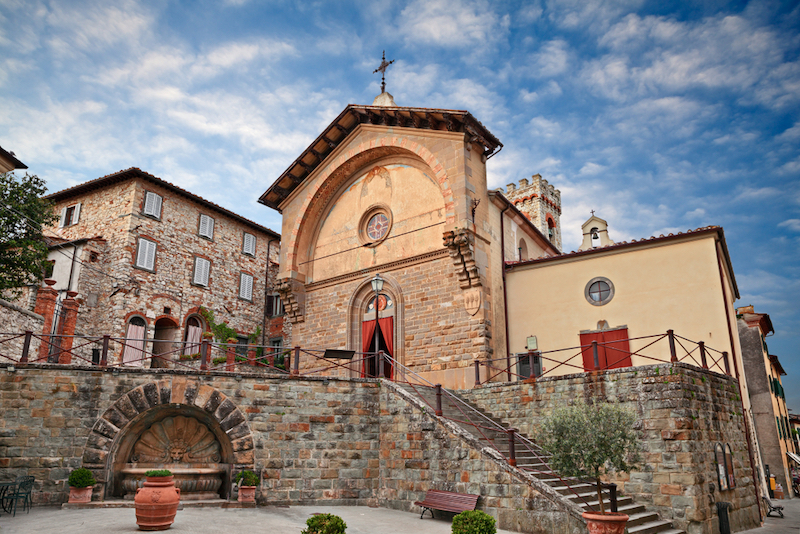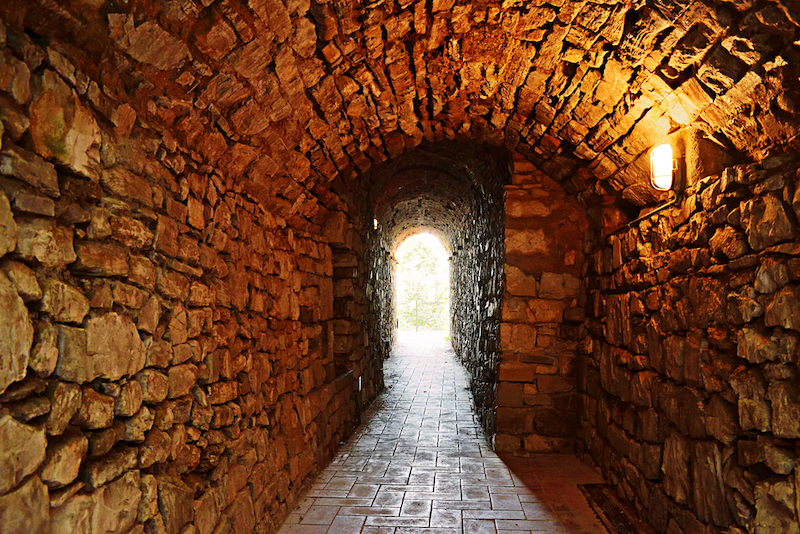Guide to Radda in Chianti: Radda in Chianti travel guide
If you’re in search of a quintessential Tuscan Chianti town, then look no further than Radda in Chianti. Radda in Chianti sits approximately 20 miles north of Siena in Northern Tuscany.
Radda in Chianti is not a big place by any stretch of the imagination. But what it lacks in size, it more than makes up for in sheer charm and beauty. It’s essentially a haphazard cluster of buildings, lanes and alleyways set atop a hill. That said, its lofty position also ensures it enjoys incredible 360 degree panoramic views over the surrounding countryside.
It is one of five ‘in Chianti’ Tuscan villages. The others are Greve in Chianti, Panzano in Chianti, Gaiole in Chianti and Castellina in Chianti. We recommend you visit at least one during your Tuscany holiday.
The history of Radda in Chianti
The first mention of Radda (or then Ratto) was in 1003 in an official document. However, archeologists have discovered traces of transitory inhabitants in the area as far back as 2000 BC. These were possibly travelling shepherds moving their flocks from pasture to pasture.
That said, the town was first thrown into prominence in the 13th century. This was during the conflict that raged between Florence and Siena. Along with Castellina and Gaiole, Radda was then one of three main towns in the Chianti League. The latter was a military alliance set up to defend Florentine interests in the Chianti hills. It’s not surprising then to see the massive defensive walls dating back to that period which still surround the town today. By 1384, Radda was, in fact, the capital of the Chianti League, and home to the seat of the podesta (chief magistrate).
In the end Florence triumphed and in 1559 Siena was incorporated into the Republic of Florence. As conflict dissipated, buildings once used as castles and fortifications were transformed into villas and homes. Visitors can still see these today. And Radda soon became an administrative and trading hub for agriculture based on the mezzadria (share cropping) system. This system meant that local tenant farmers were forced to hand over part of their harvest to wealthy landowners.

The current name – Radda in Chianti – rather than plain and simple Radda, came about in 1911. It was the result of efforts to give increased prominence and status to the area’s wine production. The wine boom that Radda (and Chianti) is now famous for began in earnest even later in the 1970s. But Radda’s wine making history goes back centuries before that. As early as the 16th century, it was exporting wine to England. Then in 1716, Cosimo III, Grand Duke of Tuscany, officially delimited the production zone of Chianti wine. And Radda became one of the main production centres along with Greve, Castellina, Gaiole and Panzano.
Incidentally, these 18th century boundaries and rules still apply to Chianti wine production today. However, these days they are overseen by the Chianti Wine Consortium which was established in 1927.
What to see in Radda in Chianti
Radda is a typical Medieval town. Its historic centre is car free and it takes just 10 minutes to stroll from one end to the other. However, in reality, it will take a lot longer than this. After all, there are simply too many tempting shops to look into en route! These sell some wonderful souvenirs to take home with you including hand crafted items made from olive wood and leather.
A good first stop on your visit is the 16th century town hall which sits within the main piazza – Piazza Ferrucci. Formerly known as the Palazzo del Podesta, its façade is decorated with a plethora of heraldic shields. At the height of its importance, it would have contained jail cells and rooms in which the chief magistrate could live.

On the other side of the square is the Propositura di San Niccolo. This church dates back to the 12th century but sustained significant damage during WWII. As a result, it was quite substantially renovated subsequently. The bell tower, for example, dates back to the 1950s but uses one of the old castle towers as a base.
This central piazza is also where you will find the village fountain. A network of cobbled alleyways fan out from this central piazza to the defensive walls that surround the town. There are fantastic views to be enjoyed from these village walls.
Finally, it’s worth looking out for the ghiaccaia granducale if you want to enjoy a glimpse into Radda’s past. This was built to allow villagers to pack the building full of snow in the Winter months. This would then form ice which would last the village all Summer long. Head to the terrace where you can see the top of the building (and enjoy the wonderful views!)
And, last but not least, make sure you don’t miss the (albeit brief) Medieval walkway. If you’re visiting in the hot Summer months, this also offers some welcome shade!

What to do in Radda in Chianti
No visit to Radda would be complete without visiting one of the nearby wineries or enjoying a wine tasting in one of the towns enotici. Casa Chianti Classico is housed in what was once an 18th century Franciscan monastery in the upper part of the town. It was once the Convent of Santa Maria del Prato, an important pilgrimage site. But now visitors can now enjoy a tour of a wine museum here. This sits on the first floor of the building. And then, if you have time (and it’s certainly worth taking the time), enjoy a wine tasting before finishing with a wonderful lunch in the enoteca. The terrace of the enoteca enjoys wonderful views over the Chianti vineyards. Other enotici in Radda include Enoteca Toscana, Bottega di Giovannino and Enoteca Casa Porciatti. You can also pick up picnic supplies here if you fancy an impromptu picnic on one of the village benches.
Of course, there are plenty of wineries in the area immediately surrounding Radda in Chianti as well. A couple of our favourites include Antinori nel Chianti Classico and Castello di Meleto.
And, if you are more of a beer drinker than a wine lover, you don’t need to worry. There is also a brewery in the village – Chianti Brew Fighters.
The countryside around Radda is stunning too. So if you fancy exploring a bit further afield on your visit, then a great option is to hire bikes and tour the Chianti roads on two wheels. The Chianti region is hilly so if you’re looking for an easy cycle, we recommend you hire e-bikes! One place well worth a cycle to is Volpaia. This is around 30 minutes by bike. The centuries old castle in Volpaia is magnificent even today. And the Commenda di Sant’ Eufrosino, a small 15th century church, is also a fine example of the area’s Renaissance past.
When to visit Radda in Chianti
Our favourite time to visit is in the Spring or early Autumn. This is when you will find the village that little bit quieter and the crowds a little fewer. Springtime is also when the surrounding area is filled with wild flowers. And Autumn is when the vineyards are filled with colour. If you decide to visit across the Winter months, don’t be surprised if some shops and businesses are closed. And in the Summer, be prepared for the streets to be busy with other holidaymakers.
What’s on in Radda in Chianti
The village has a small market which is held on the afternoon of every fourth Monday. It also plays host to a couple of annual events. The first of these, not surprisingly, revolves around wine. The Radda nel Bicchiere is an annual weekend wine event that takes place at the end of May or beginning of June. And then later in the year, every September, is the Gallo Nero Granfondo. This is a one day cycling race. There are two route options. Opt for either the shorter 60 km route or the more taxing 133 km race.
How to get to Radda in Chianti
By car: Radda in Chianti is easiest to reach by car. Do be aware though that it can get busy and so parking may be difficult at peak times. There is limited parking on the outside walls that surround the town. Look out for the blue-lined parking spaces on the roads that circle it. There is also a car park near the village playground.
By air: The nearest airport is in Florence, an hour away. You can also fly into Pisa which is approximately 90 minutes by car.
By train: There is no train station in Radda in Chianti.
By bus: There are a couple of different bus operators that go to Radda in Chianti dependent on where you are travelling from. The first is Sita. The second is Siena Mobilita.


